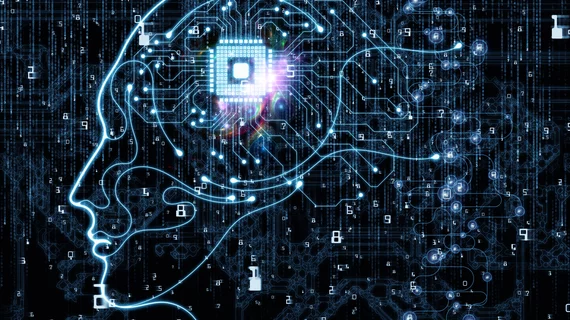AI interprets chest x-rays, but not well enough to replace radiologists
An artificial intelligence (AI) algorithm can effectively help radiologists interpret chest x-rays, according to new research published in PLOS ONE. However, limitations persist that make it seem unlikely such an algorithm could actually replace a radiologist altogether.
The authors used a deep learning (DL) algorithm to interpret 724 chest radiographs from 724 adult patients, looking for the presence of pulmonary opacities, pleural effusions, hilar prominence and enlarged cardiac silhouette. Two experienced, fellowship-trained radiologists also interpreted each x-ray to established a standard of reference (SOR). In addition, four other radiologists assessed the x-rays. Follow-up exams were assessed for 150 of the x-rays, analyzing change over time.
Overall, according to the SOR, 42 percent of the chest x-rays had no findings. Single abnormalities were seen in 23 percent of the x-rays and multiple abnormalities were seen in 35 percent of the x-rays. The area under the curve (AUC) for the algorithm ranged from 0.837 to 0.929. The AUC for the team of four radiologists ranged from 0.693 and 0.923.
“The overall accuracy of DL algorithm was better or equal to test radiologists with different levels of experience,” wrote Ramandeep Singh, MD, Department of Radiology at Massachusetts General Hospital in Boston, and colleagues. “DL algorithm had similar accuracy for detection of enlarged cardiac silhouette, pleural effusion and pulmonary opacities in [chest x-rays].”
The algorithm, however, had the lowest AUC, 0.758, when it came to assessing changes in pulmonary opacities over time, revealing a significant limitation.
“Though helpful in improving the accuracy of interpretation, the assessed DL algorithm is unlikely to replace radiologists due to limitations associated with the categorization of findings (such as pulmonary opacities) and lack of interpretation for specific findings (such as lines and tubes, pneumothorax, fibrosis, pulmonary nodules, and masses),” the authors concluded. “However, DL algorithm can expedite image interpretation in emergent situations where a trained radiologist is either unavailable or overburdened in busy clinical practices. It may also serve as a second reader for radiologists to improve their accuracy.”

